MXA Mid-Week Report: Training With Jeff Spencer, Meet Kyle Summers, The Tour Is Here



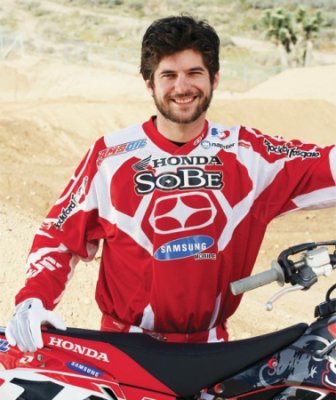
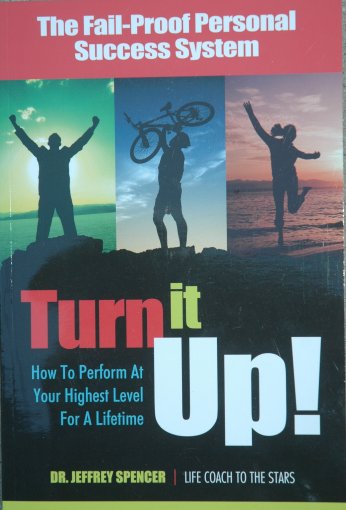
Jeff has worked closely with Motocross Action for over two decades and following his success with K-Dub this season we decided it was time to check in with himÿto find out the latest which includes the publication of his newest book, “Turn It Up!”.ÿAlso, for exclusive training tips (“The Ten Worst Training Mistakes”) from the man himself, be sure to check out theÿSeptember issue of MXA.
MXA: How did you get involved in motocross?
Jeff: A neighbor of mine, Bruce Burness, was a recreational cyclist and heavily involved in the motocross industry developing suspension and frame geometry systems for all the factories. When we would ride in the hills of Pasadena we would discuss the demands of the sport and what the riders were doing for training. And, from my experience as an Olympic cyclist and my academic training in exercise physiology I saw there was a huge mismatch between what the riders were doing for training and what the demands of the sport were. I saw tremendous opportunity for improvement He mentioned my comments to American Honda’s management who wanted to hear what I had say on the topic as they were revamping their motorcycle sports program that year. They liked what I said and in January, 1980, we held the first ever organized factory training camp in motocross to get ready for that year’s supercross season. My tenure lasted four years with the Honda factory with the last two showing complete dominance of the sport.ÿÿ
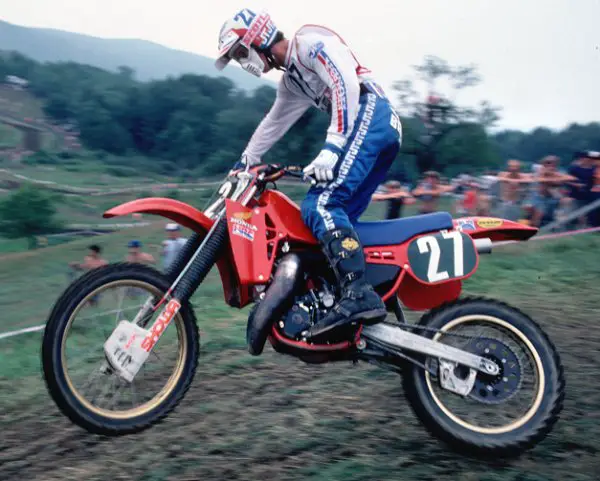
MXA: Honda was considered the dominant team back then. What was the atmosphere like within the team?
Jeff: The ?80’s was an inspired time of creativity and development for the riders and bikes. The riders and factory were hungry for innovation to gain the competitive advantage. There was a sense of innocence, in a certain way, combined with iron-like will and work ethic. At Honda during that time came the advent of low radiator on the two stroke, linkage single shock suspension systems, anti-squat devices, springer front ends, and other pivotal ideas; some of which survived the cut and are standard equipment on today’s bikes. On the riders’ side training programs were becoming more individualized and systematic. More attention was being paid to injury prevention and management, and diet. There was real team atmosphere and cooperation among the riders to help each other get the best out of each other. It was very dynamic time as Roger DeCoster, and Dave Arnold, were at the helm of the program and they both had tremendous skill and creativity in innovation and weren’t afraid to try new ideas. Many teams get trapped by their traditions making shifts in policy difficult to keep pace with necessity. It was a lot of fun.
MXA: What riders have you trained and who you currently work for.
Jeff: Since 1980 the national champions I’ve worked with either on training, and, or injury management,ÿ include Chuck Sun, Johnny O’Mara, Donnie Hansen, Darrel Schultz, David Bailey, Bob Hannah, Rick Johnson, Broc Glover, Jeff Ward, Jeremy McGrath, Mike Kiedrowski, Mark Barnett, Jeff Stanton, Timmy Ferry, and Chad Reed. I also had the good fortune of being the trainer for the 1981 and 1982 MX des Nations teams that began the U.S. dominance in the event that continues today. Currently I’m working with Nathan Ramsey and Kevin Windham in the Supercross class.
MXA: Lance Armstrong is definitely your biggest success story, what do you think his take away was from working with you?
Jeff: What we both knew in our own way going into the first Tour in 1999, and confirmed through the last Tour in 2006, is that the key to a successful career is to have the proper balance of training to recovery and maintain a champion’s mentality at all times. You’ve got to be physically and mentally capable of creating and taking advantage of opportunity and the only way that can happen is through proper preparation and trust in your ability, training, and history of success.
MXA: What’s a secret Spencer training tip can you throw out that any aspiring racer can learn from?
Jeff: Winning is learned behavior and no amount of will or talent will make up for bad choices, stubbornness, or not doing the work to develop the skill and talents necessary to put in top performances. Study and emulate what the great champions have done to win their first race and repeat their championships. It’s no accident they’re perennial winners.ÿ
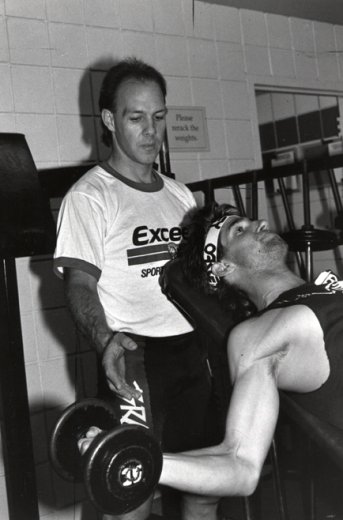
MXA: In talking about creating a successful training program, you always seem to stress a lot more than just burning laps on the track and doing more exercises.
Jeff: Real success is determined by how you address the challenges that come before you. It’s those challenges that control our growth and limits. It’s not just about doing five more push-ups. The most successful athletes look at their entire program and focus on their life infrastructure. Winning is a learned skill, not just turning fast laps. I think another vital aspect is that every rider needs their own motivation to want to succeed. It’s the rider who has the best vision of their capacity. It shouldn’t be parents, agents or team managers.
MXA: In the last few years there has been a real surge in riders hiring trainers.
Jeff: Although I question what some of these guys are bringing to the table, it’s a positive step that the riders are thinking about having an outside counsel in their lives. I think it’s ridiculous how the factories spend millions of dollars on these kids every year and base their investment only on their talent on the track. Talent isn’t enough. There is a huge difference between having a training partner and having someone to help you build a long and prosperous career. Putting too much emphasis on a training parting can be detrimental because it can build up a sense of dependency which isn’t good. What I try to do is identify the landscape that the rider finds themselves in and then make the intelligent choices to enhance their effort within that landscape.
MXA: How does it feel to have worked with such a long list of great riders?
Jeff: My greatest passion is to see the guys I work with get the rewards they deserve from all the time and effort they put into themselves. They turn the throttles. All I try to do is set the compass headings and let them take it from there. My record speaks for itself, but I think it’s safe to say that I know how to win.
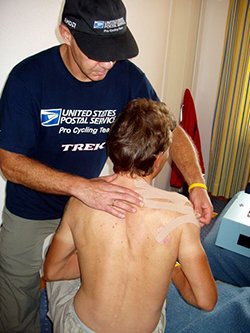
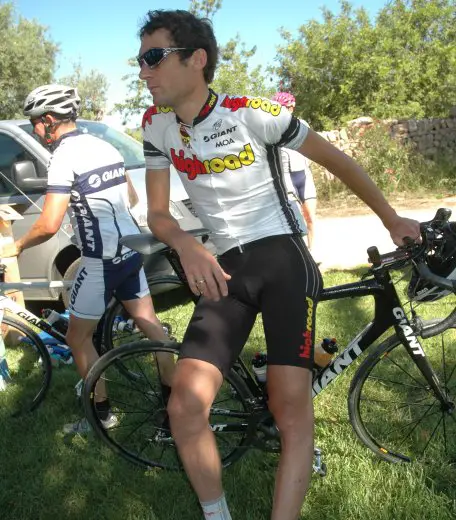
Michael: There are four guys from my team that also live in Girona, Spain so I’ll be riding with them and maybe some of the guys from Slipstream. I ride a lot with George (Hincapie) and we’ll start heading for the bigger mountains outside of town in the week befofre the Tour.ÿUsually we’ll ride up into the mountains and stay at a hotel up there for a few days and then ride home. There’s a big difference between riding a six kilometer climb and a ten to twenty kilometer climb. Just the effect on how your lower back feels is pretty extreme and your body has to learn to adapt to that.
Michael: That’s actually hard to put into words. It makes me think back to one of the stages in the Dauphine. We rode 235k and had to climb five mountain passes and afterwards George and I were riding back to the hotel and we were both starving. The only thing we could find to eat was a sandwich that our soigneur had been saving for himself and we just laughed about that. It’s kind of ludicrous to try and explain to someone what we had just done, especially when they ask what we got for the effort. On that long Dauphine stage I burned about 10,000 calories. On the other end, I think if people saw how much we eat after a race they might start to get an idea of what we put ourselves through. But when you summit climbs in a race, it’s not even just an accomplishment, it’s something rewarding inside you, it’s a spiritual reward.
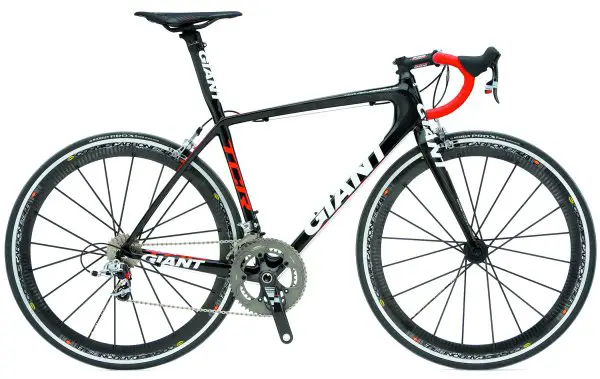

Featured Classes:
Super Sport Class (up to 250cc and 1968, includes all sidecars): To celebrate the great “success” of Italian industry and to complete the traveling museum, which the Motogiro is, in 2008 the organization is proposing something novel: the new TSS class open to motorcycles and sidecars of all makes with 250 cc cylinders, built up to 1968. Those enrolled in the TSS will participate in ability trials set aside for them and from which a special classification will be assigned.
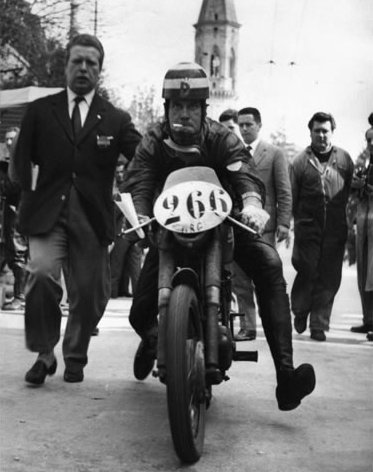
Super 70s Class (all brands, up to 1000cc, up to 1979): This class is open to all makes of bikes with a minimum 200cc cylinder and bikes of historic interest (at the discretion of the organization), in accordance with the Highway Code, properly insured, and built between 1968 and 1978. Registered in the Memorial class will participate in ability trials reserved for them, and from which a special classification will be assigned.
Scooter Class (all brands, all sizes; up to 1979): Vespa will have its own special Motogiro class to celebrate the more than one hundred versions of the iconic scooter produced during the last half century.
Tourist Class (all brands, all sizes, all years): Open to those who own a bike of recent manufacture and who want to live the atmosphere of the Motogiro in a more relaxed way and at a non-competitive level. Bikes of all makes (and in accordance with the Highway Code and properly insured) are admitted and they will follow the same itinerary as the Historic Revival. Participants will be divided into groups of about 25 motorbikes and will be assigned a group leader who will serve as a guide along the route and to whom it will always be necessary to make reference.
Side Car Class (all brands, up to 900cc, up to 1979): Open to all motorcycles up to 900 cc with sidecars up to 1979.
The Motogiro America 2008 will start and finish in Monterey, California, motor sports capital of the West. Special attractions and local events will be held throughout the Peninsula and the itinerary will evoke the authentic spirit of the original tour. The end of the rally will be celebrated with a gala dinner. A more detailed itinerary and program of events can be found by Click Here.

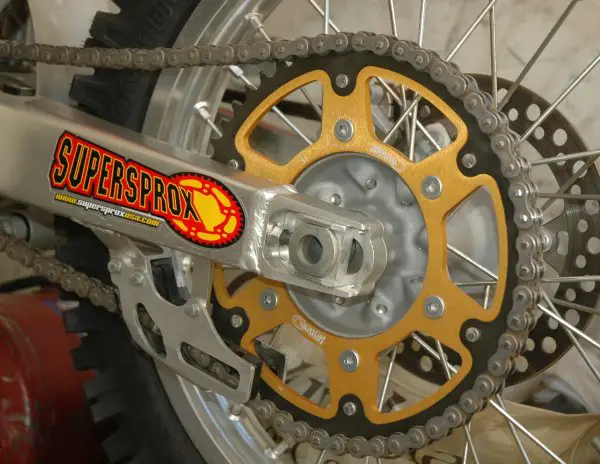
We are the exclusive designer/manufacturer of the legendary Supersprox-stealth sprocket. Said to be a definitive breakthrough in sprocket manufacturing technology and the first genuine innovation (step forward) in 20 years. We offer the ultimate Road, MX, Off Road and ATV sprockets on the planet. Supersprox-stealth will last 3 times longer than an aluminum sprocket and it’s 50%ÿ lighter than a steel sprocket. We guarantee that our sprockets will outlast, outperform and outshine the competition or your money back.ÿSupersprox-stealth was developed for modified superbikes. Bikes pushing out 600+ horse power, where aluminum sprockets can’t handle the torque delivered through the chain drive system. Supersprox engineers conceived and developed the combination of the two materials in 2000-2001. Supersprox have counted 7 world titles since that time and the 2007 Dakar rally winning (Cyril Despres) KTM team, all rely on Supersprox-stealth. Sometimes called Tri-Metal or Lord of the Rings (not to be confused with Twin Ring) but we call it Supersprox-stealth.ÿFor more info, Click Here.
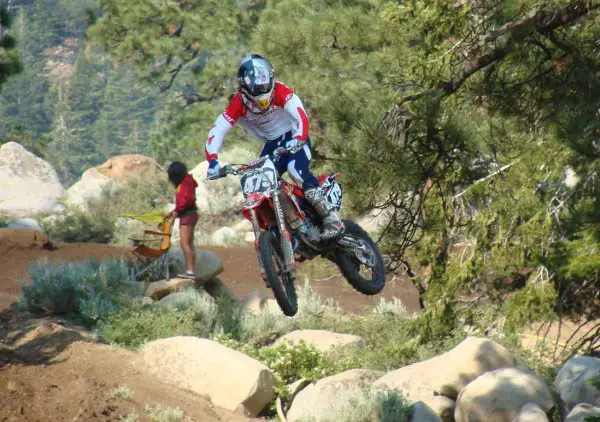
By: Xakota Espinoza
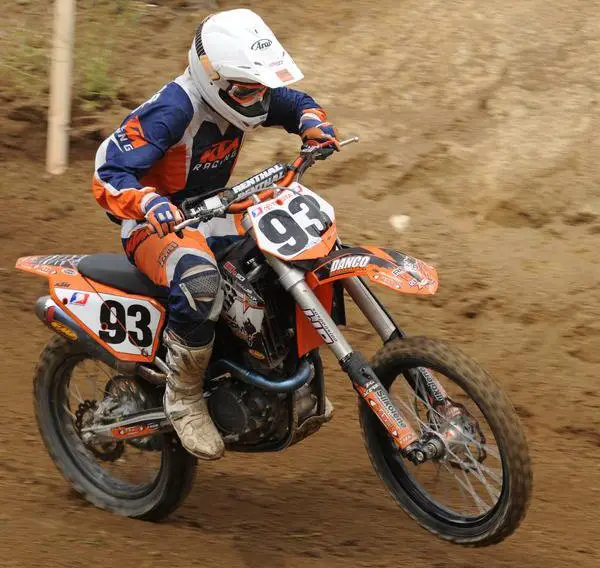
Kyle: I strapped a flashlight on my bike and went out and rode at night the week before. No,ÿjust kidding!ÿActually, I didn’t really do anything all that different.
Kyle: It was alright it was kind of sketchy, some parts were really smooth and the track wasn’t very rough because they were scared of having the shadows in the ruts. It wasn’t as good as it could’ve been if it were held during the day. I didn’t like it quite as much. I prefer it being rougher. I think they should go back to having it during the day.
Kyle: Iÿjust stuck withÿclear lenses.
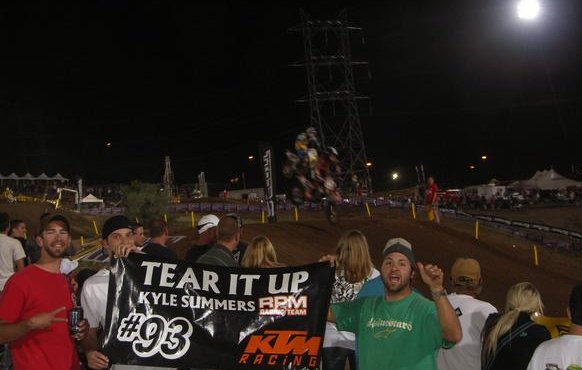
Kyle: Not really, a lot of people ask me if I ride up there a lot but I’ve only ridden that track maybe twice this whole year. Training in Colorado definitely helps because it’s at like 6000 feet altitude, so it was easier for me to get acclimated.
Kyle: It was good. I didn’t know I overalled better than him until a little while after. Someone came up to me and was like “you beat Nick Wey!” I was pretty pumped. I was more pumped on the 1st moto when I finished tenth.
Kyle: During the race I didn’t know I was in 10th, I thought I was in 11th and still had to pass Jeff Alessi and all my tear offs were gone so I could barely see. At the end of the moto I was pretty bummed because I thought I got 11th but when I found out I got 10th I was really pumped.
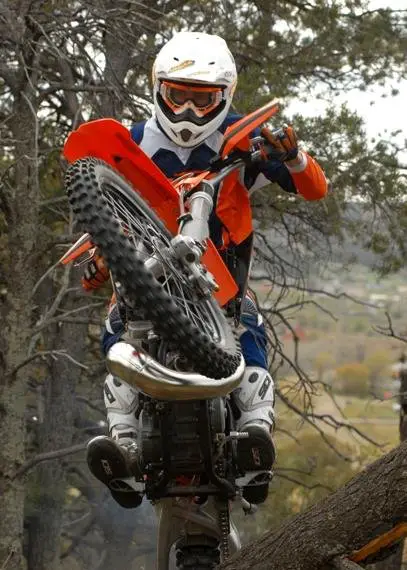
Kyle: I like the Nationals, but I think I’d get tired of just doing the nationals and not WORCS. WORCS is something different and something fun to do. I don’t know which I prefer better, I probably like them about the same.
Kyle: I’m pretty sure I’m doing Red Bud next weekend. Washougal for sure, I’m signed up for

Kyle: Whenever I’m out in California I’ll go riding with him but other than that not really.
Kyle: Stay healthy. I’d definitely like to finish an overall in the top 10; I just need keep training and doing what I’m doing. I’d be pretty pumped if I could get an overall finish in the top 10.
Kyle: To be as successful as I can be and race for as long as I can. Then probably get a job somewhere in the industry, that would be great.






Comments are closed.